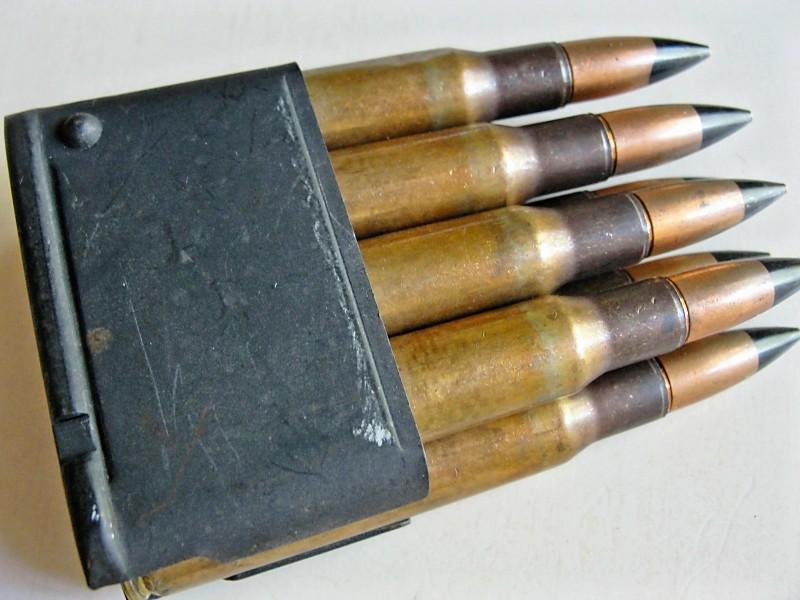-
FREE MEMBER
NO Posting or PM's Allowed

Question on CMP Ammo- is TW 53 Headstamp Armor Piercing?
I have opened a box with some TW53 in it, and am a bit confused. Most of the posts I find are saying the TW53 headstamp is Armor Piercing, but the rds I have (from a lose spam can) are not black on the heads. So what's the deal, are they AP or NO?
Information
 |
Warning: This is a relatively older thread
This discussion is older than 360 days. Some information contained in it may no longer be current. |
|
-
09-18-2012 10:23 PM
# ADS
Friends and Sponsors

-
Advisory Panel


The box would be marked, the spam can would be marked, and the tip would be marked. The year doesn't mean anything.
-
-
Contributing Member


-
The Following 3 Members Say Thank You to Sarge1998 For This Useful Post:
-
Advisory Panel


Nice...wish we could get that up here!
-
-
Contributing Member



Originally Posted by
bls72bmw

I have opened a box with some TW53 in it, and am a bit confused. Most of the posts I find are saying the TW53 headstamp is Armor Piercing, but the rds I have (from a lose spam can) are not black on the heads. So what's the deal, are they AP or NO?
Welcome bls72bmw, it sounds like you ordered a loose can of Greek M2 that comes in a .30 cal ammo can, a spam can is pictured above. These rounds are loose and as the CMP sales description states, headstamp varies. The search you made undoubtedly hit on discussion involving AP sales that were offered in 2010, again see the above photos for an example of that sale. The current loose ammo reportedly consists of de-linked Greek M2, it's usually very good for recreational shooting, but do check each round for corrosion.
sales description states, headstamp varies. The search you made undoubtedly hit on discussion involving AP sales that were offered in 2010, again see the above photos for an example of that sale. The current loose ammo reportedly consists of de-linked Greek M2, it's usually very good for recreational shooting, but do check each round for corrosion.
-
-
FREE MEMBER
NO Posting or PM's Allowed

The TW53 I received from the CMP recently was M2 ball. Not AP.
recently was M2 ball. Not AP.
-
FREE MEMBER
NO Posting or PM's Allowed

-
Contributing Member


Twin Cities Ammunition Plant, they produced both .30 Cal. ammo in M2 Ball, M2 AP, M25 Tracer, M14A1 API and M1909 blank. The first non-corrosive headstamp for M2 Ball was TW51 and the first AP NC was TW53. The TW53 ball ammo was de-linked from Greek surplus MG ammo.
Source:
http://www.odcmp.org/1101/USGI.pdf
Noncorrosive Chart - CMP Forums
History
The TwinCitiesArmyAmmunitionPlant was a product of the government-owned, contractor-operated (GOCO) war materials production program established by the War Department during World War II. The Minneapolis - Saint Paul area emerged as a potential GOCO candidate primarily on the basis of labor supply. TCAAP was one of six GOCO plants built to produce small arms ammunition during World War II, and was operated by the Federal Cartridge Corporation under contract to the War Department.
Construction of the plant began in August 1941 and was completed with three main munitions facilities. Each main facility had five lines of production and the entire plant had a total of 35 lines.
The mission of TCAAP was to produce .30, .50 and .45 caliber ammunition. Production of small arms ammunition began on March 9, 1942, and the plant remained in production for 42 months. Between 1942 and 1945, TCAAP produced all five main small arms types: ball, armor piercing, tracer, incendiary, and blanks. In 1944 the plant opened an important small arms ammunition reclamation center. The design of the .30 and .50 caliber cartridge-disassembly machines by TCAAP personnel in the late 1940s represented a significant technological advance in small arms salvage technology. Development in ammunition salvage begun during World War II continued at the facility during the Cold War period. The work force reached its peak in July 1943, when employment totaled about 26,000 people, more than half of whom were women.
After Victory over Japan Day, Twin Cities Ordnance Plant was placed in reserve status and "mothballed". Renamed the Twin Cities Arsenal, it was operated by the US Army from 1946 to 1950, when the installation was brought back into production to manufacture small arms and artillery ammunition for the Korean War. The Arsenal remained in service until 1957 when it was again closed down. In 1965, during the Vietnam War, the plant was re-opened for the manufacture of new types of small arms ammunition. It was on standby status from 1976 through 2002. In 2002 over 600 acres (2.4 km2) were declared "in excess" by the United States Army, though Alliant Techsystems continued to manufacture munitions there as recently as 2005.
Army, though Alliant Techsystems continued to manufacture munitions there as recently as 2005.
Last edited by Sarge1998; 10-03-2012 at 03:26 PM.
Reason: Explain TCAAP
-
The Following 2 Members Say Thank You to Sarge1998 For This Useful Post:
-
Legacy Member

See if the tip is attracted to a magnet.
-
-
Legacy Member

Here is a cut away of DEN 42 AP.
-
The Following 4 Members Say Thank You to Skip For This Useful Post:















 Register To Reply
Register To Reply











 What is TW? But yeah, I can see your confusion. But if it doesn't have the black tips I would assume it's not AP. Unless someone forgot to paint them, but I doubt it.
What is TW? But yeah, I can see your confusion. But if it doesn't have the black tips I would assume it's not AP. Unless someone forgot to paint them, but I doubt it.

